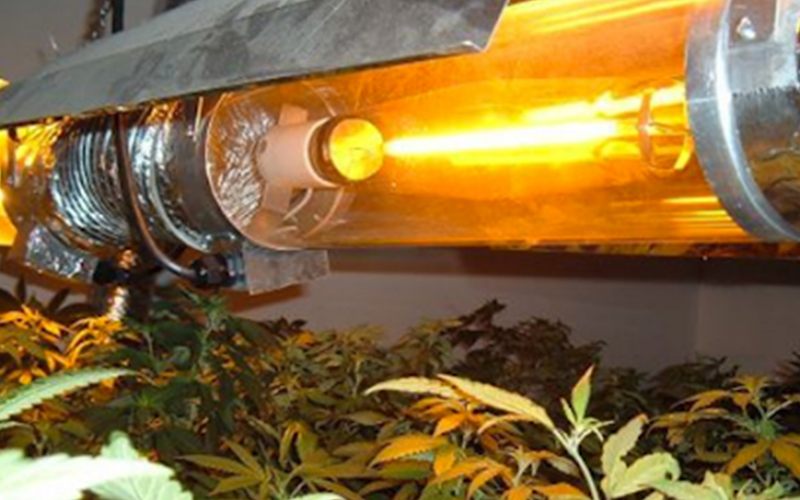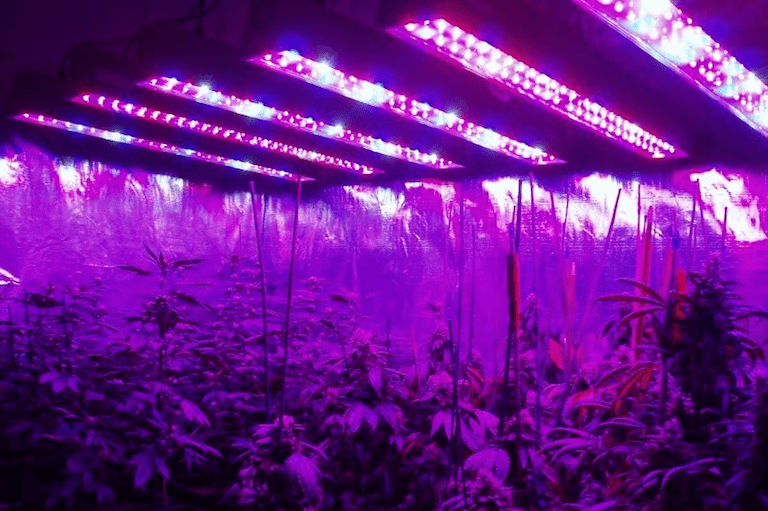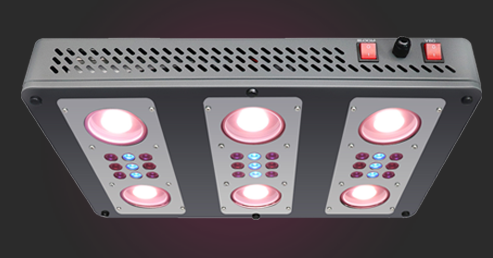Growing cannabis under LED lights is becoming more and more common, and LED light technology for cannabis continues to develop rapidly. Part of the reason is that, especially in the US/Canada, cannabis is grown in large numbers under LED lights. Hobby growers began to profit more and more, because it became easier to grow under LEDs. However, what is the biggest difference between LED lights and other light sources, and when you start or switch to using LEDs for cultivation, what are the LED elements that must be considered?
Different types of lighting
LED is a relatively new technology that has been developing rapidly in recent years. Part of the reason is the legalization of cannabis in Canada and many US states, and it is also due to the expertise of Dutch greenhouse builders. Before delving into the benefits and details of using LEDs for growth, we listed the most commonly used growth lighting:
HPS

Many hobby growers use high pressure sodium or HPS to illuminate the planting room. Although there are 1000 watt HPS lamps, they are usually 200 to 600 watt lamps. When using HPS lighting, an (electronic) ballast must be used because it requires a very high peak voltage when starting. Because HPS generates a lot of heat, the wattage of the light is usually suspended within 10% of a few centimeters above the cannabis plant. Therefore, a 600-watt HPS light must always be hung at least 60 cm away from your cannabis plant to prevent burning. On the other hand, if the conditions are right, 1 gram per watt can be increased under HPS.
LED lighting

LED lights generate less heat than HPS lights because they use energy more efficiently. Traditional incandescent lamps convert 10% of electrical energy into light, and 90% of electrical energy into heat, while LED lamps convert nearly 90% of electrical energy into light. In addition, unlike HPS or incandescent lamps, the heat emitted by LED lamps is not emitted through the bulb, but through the back of the chip connected to the LED. This ensures that the LED lights get warmer (much more). As a result, your cannabis plant also evaporates less water and absorbs less nutrients. Under LED, you can also harvest about 1 gram per watt under optimal conditions.
Fluorescent tubes and energy-saving lamps
You can also grow successfully under fluorescent tubes and energy-saving lamps. Daylight (6500 Kelvin) CFL or TL is usually used to grow below. After being correctly positioned in the growth chamber, you can also perform full growth below, with a maximum harvest of 1 gram per watt. However, in terms of growth space and growth methods, you need above-average creativity.
LED weed light
Over the years, there has been more and more development, which has also led to better and better LED lights for weeds. But what technologies are there today, and what are the differences between these technologies? Of course, which technology is the best way to grow cannabis with LEDs?
"Normal" LED
You can easily grow your own weeds with the first-generation LED lights. Growers often refer to them as "purple" LEDs because the first generation of LED lighting included a mix of blue and red LEDs. Blue and red become purple together, which is why the purple remains. It is somewhat different from the yellow light of HPS.
These LED lights are still widely available and are relatively cheap today. Production usually takes place in the United States or China, which is one of the reasons why you often see this kind of lights in online markets such as eBay. But nowadays, you can also easily purchase these lights in China through AliExpress, MiniInTheBox or other Chinese online stores/trading platforms.
It is well known that products manufactured and sold outside the European Union do not have to comply with strict (European) guidelines, for example in terms of safety and material use. You can count on a country like the United States to be in the right position in terms of safety and quality, because the United States and the European Union have reached an agreement on this.
Taking many other countries outside the European Union as an example, products may bring more risks in terms of quality and safety. Our recommendation is to always consult a certified LED manufacturer or (online) store located in Europe or the United States. In this way, you can be sure that your grow light is safe and has been tested in accordance with strict (European) guidelines.
Advantages: The biggest advantage is that this LED lighting has a positive impact on the quality and yield of buds. This is also one of the cheapest ways to start growing under LED lighting.
Disadvantages: The light they emit is not as good as other LED technologies, and their quality is usually slightly lower, which reduces their reliability and durability. Therefore, manufacturers improve their LED lighting by adding COB or UV LEDs.
Diffuse LED
Diffuse LED lighting is a panel/board with many small LED lights distributed on it. There are 2 different variants of these, namely rack and spider. The purpose of these LED panels is to distribute as many small LED lights as possible over a large area. Usually, these are LEDs with relatively low power, but many LED lights with low power still generate a lot of watts on a larger surface.
Partly due to high quality, high output and long life, you often see diffuse LED lighting in commercial greenhouses.
Advantages: Growing cannabis under diffuse LED lights is one of the most economical ways to grow cannabis under LEDs. Therefore, according to your lighting power, you will get the maximum light radiation. Therefore, 100-watt diffused LED lighting will provide more light than 100-watt "normal" (LED) lighting.
Disadvantages: Taking the "spider" as an example, high-quality diffused LED lighting is sometimes (extremely) expensive.
COB LED

The production of the first batch of COB LEDs took place in 2013. COB stands for Chip on Board. Compared with conventional LED lighting, COB has a big technical difference. For example, place hundreds of LEDs on a small chip. With this technology, LEDs can be placed in the growth light as efficiently as possible and provide colors from the entire spectrum. Due to the positive quality of COB LEDs, you can expect the same output as HID lamps.
Advantages: COB LEDs are very efficient, so they can generate the maximum light compared to the power consumption in watts. In addition, they emit very strong light, making them "glow" only in taller leaves.
Disadvantages: Quality costs money, which is one of the few objections to COB LEDs. High-quality grow lights equipped with COB LEDs are very expensive, especially when you compare them with the first mentioned "purple" LED model.
Which LED grow light should you choose?
Now that you have understood the basic knowledge and types of LEDs and know its advantages and special functions, you may want to know which LED is the best grow light to use. 100 growers will give 100 different answers to this. Just a brief summary of important things to pay attention to when buying (LED) light-emitting lamps:
Cost: LED is a one-time investment. Given its long service life, you will quickly get a return. LED grow lights that use diodes from brands such as Cree, Bridgelux, Philips or Epistar are usually slightly more expensive, but these are leading brands that provide high-quality products.
The spectrum of lighting: The blue and red spectrum are essential for the growth and flowering of cannabis plants. In addition, more and more ultraviolet (UV) and infrared light are added to LED plant lights. This stimulates photosynthesis and resin production. A good full-spectrum LED should also contain ultraviolet and/or infrared.
Types of LEDs: Regarding the types of LEDs, the main question is whether you want to invest heavily in all decorative LED grow lights, or whether you want to gradually increase it as you grow.
Guarantee: A good LED grow light can be easily used for about 10 years. Therefore, many suppliers' guarantees are consistent with this. If you only get a one-year warranty for LED lights, it is best to ask yourself whether the product is of good quality. A three- or five-year warranty is more realistic.
Power: You want at least 300 watts (LED) lighting per square meter of growth space. Always focus on actual consumption, not HPS consumption to match. You want each diode (each LED light) to have at least 3 watts.























